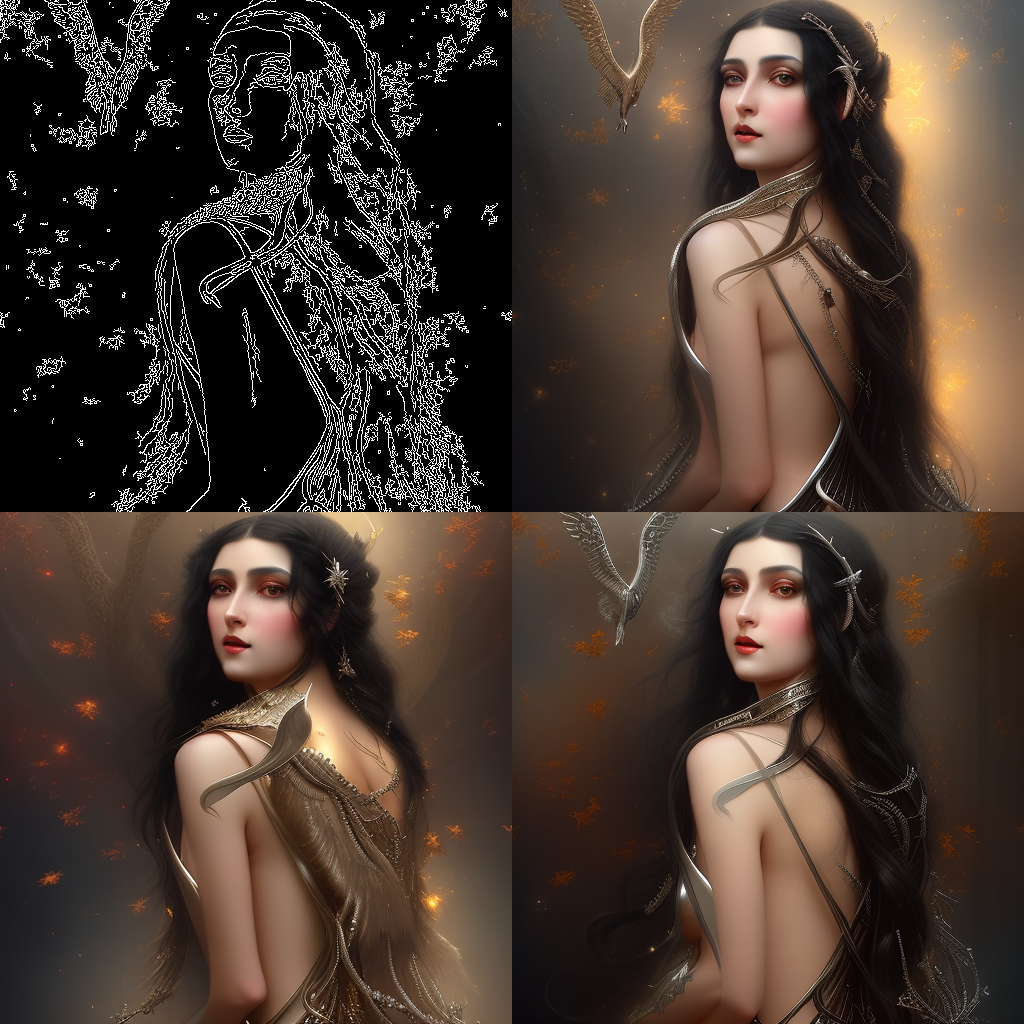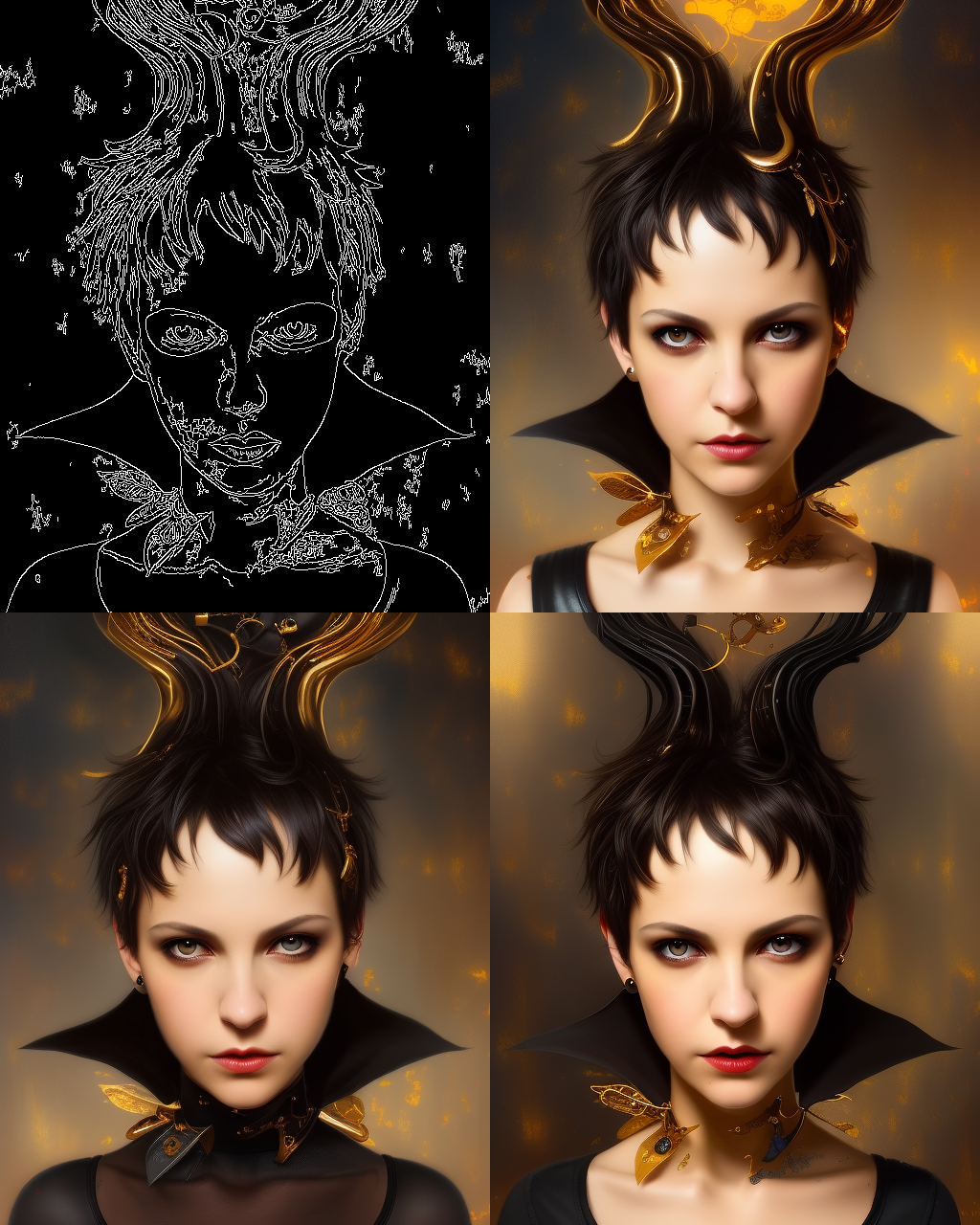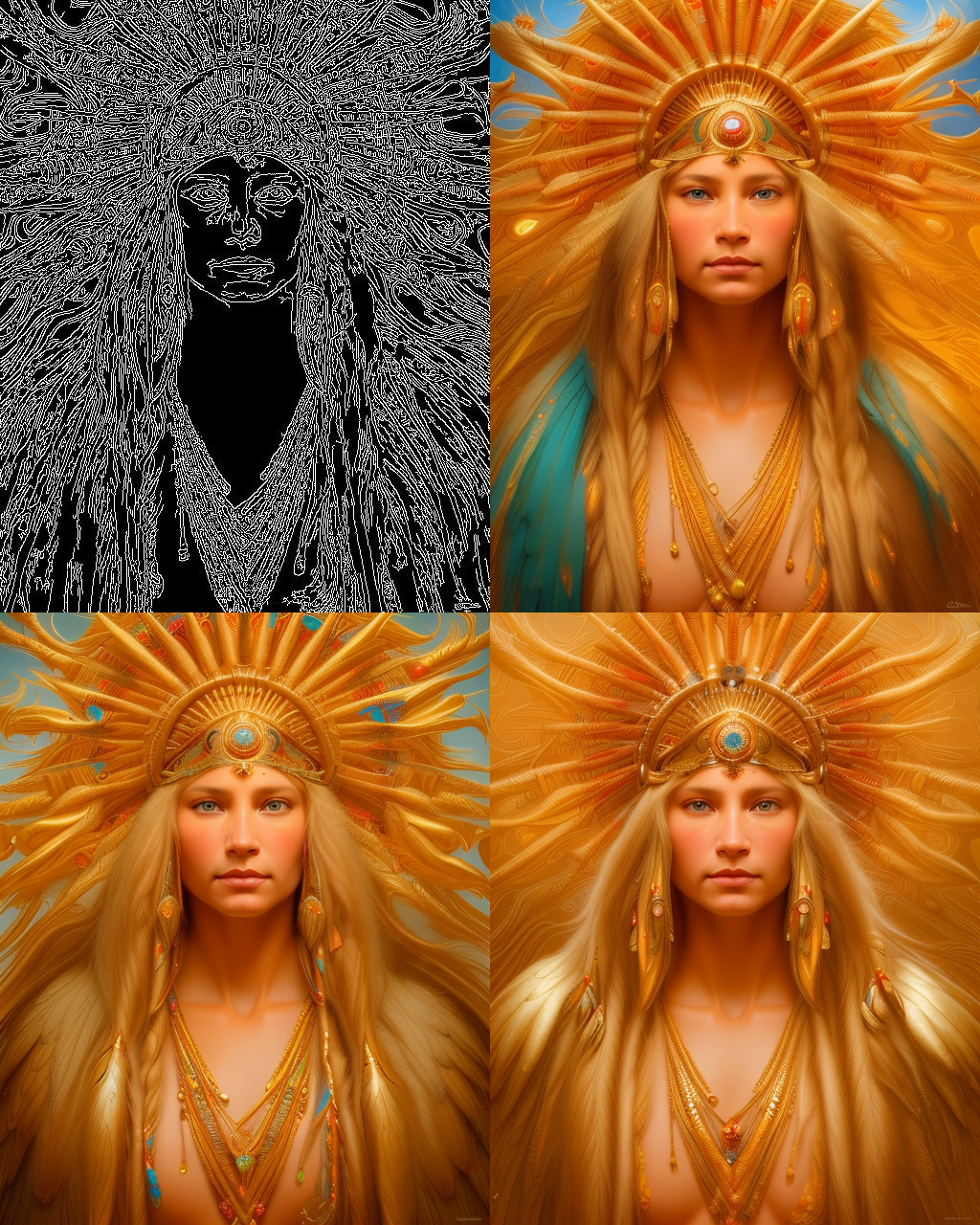sd-control-lora-v3-canny
These are control-lora-v3 weights trained on runwayml/stable-diffusion-v1-5 with the canny type of conditioning. You can find some example images below.
prompt: best quality, extremely detailed, portrait of a beautiful winged goddess with horns, long wavy black hair, long black dress with silver jewels by tom bagshaw
 prompt: best quality, extremely detailed, an emo portrait painting. short dark brown messy pixie haircut, large black eyes, antichrist eyes, slightly rounded face, pointed chin, thin lips, small nose, black tank top, black leather jacket, black knee - length skirt, black choker, gold earring, by peter mohrbacher, by rebecca guay, by ron spencer
prompt: best quality, extremely detailed, an emo portrait painting. short dark brown messy pixie haircut, large black eyes, antichrist eyes, slightly rounded face, pointed chin, thin lips, small nose, black tank top, black leather jacket, black knee - length skirt, black choker, gold earring, by peter mohrbacher, by rebecca guay, by ron spencer
 prompt: best quality, extremely detailed, a photograph of a futuristic street scene, brutalist style, straight edges, finely detailed oil painting, impasto brush strokes, soft light, 8 k, dramatic composition, dramatic lighting, sharp focus, octane render, masterpiece, by adrian ghenie and jenny saville and zhang jingna
prompt: best quality, extremely detailed, a photograph of a futuristic street scene, brutalist style, straight edges, finely detailed oil painting, impasto brush strokes, soft light, 8 k, dramatic composition, dramatic lighting, sharp focus, octane render, masterpiece, by adrian ghenie and jenny saville and zhang jingna
 prompt: best quality, extremely detailed, portrait of a dancing eagle woman, beautiful blonde haired lakota sioux goddess, intricate, highly detailed art by james jean, ray tracing, digital painting, artstation, concept art, smooth, sharp focus, illustration, artgerm and greg rutkowski and alphonse mucha, vladimir kush, giger, roger dean, 8 k
prompt: best quality, extremely detailed, portrait of a dancing eagle woman, beautiful blonde haired lakota sioux goddess, intricate, highly detailed art by james jean, ray tracing, digital painting, artstation, concept art, smooth, sharp focus, illustration, artgerm and greg rutkowski and alphonse mucha, vladimir kush, giger, roger dean, 8 k

Intended uses & limitations
How to use
First clone the control-lora-v3 and cd in the directory:
git clone https://github.com/HighCWu/control-lora-v3
cd control-lora-v3
Then run the python code:
# !pip install opencv-python transformers accelerate
from diffusers import UniPCMultistepScheduler
from diffusers.utils import load_image
from model import UNet2DConditionModelEx
from pipeline import StableDiffusionControlLoraV3Pipeline
import numpy as np
import torch
import cv2
from PIL import Image
# download an image
image = load_image(
"https://hf.co/datasets/huggingface/documentation-images/resolve/main/diffusers/input_image_vermeer.png"
)
image = np.array(image)
# get canny image
image = cv2.Canny(image, 100, 200)
image = image[:, :, None]
image = np.concatenate([image, image, image], axis=2)
canny_image = Image.fromarray(image)
# load stable diffusion v1-5 and control-lora-v3
unet: UNet2DConditionModelEx = UNet2DConditionModelEx.from_pretrained(
"runwayml/stable-diffusion-v1-5", subfolder="unet", torch_dtype=torch.float16
)
unet = unet.add_extra_conditions(["canny"])
pipe = StableDiffusionControlLoraV3Pipeline.from_pretrained(
"runwayml/stable-diffusion-v1-5", unet=unet, torch_dtype=torch.float16
)
# load attention processors
pipe.load_lora_weights("HighCWu/sd-control-lora-v3-canny")
# speed up diffusion process with faster scheduler and memory optimization
pipe.scheduler = UniPCMultistepScheduler.from_config(pipe.scheduler.config)
# remove following line if xformers is not installed
pipe.enable_xformers_memory_efficient_attention()
pipe.enable_model_cpu_offload()
# generate image
generator = torch.manual_seed(0)
image = pipe(
"futuristic-looking woman", num_inference_steps=20, generator=generator, image=canny_image
).images[0]
image.show()
Limitations and bias
[TODO: provide examples of latent issues and potential remediations]
Training details
[TODO: describe the data used to train the model]
- Downloads last month
- 30
Model tree for HighCWu/sd-control-lora-v3-canny
Base model
runwayml/stable-diffusion-v1-5